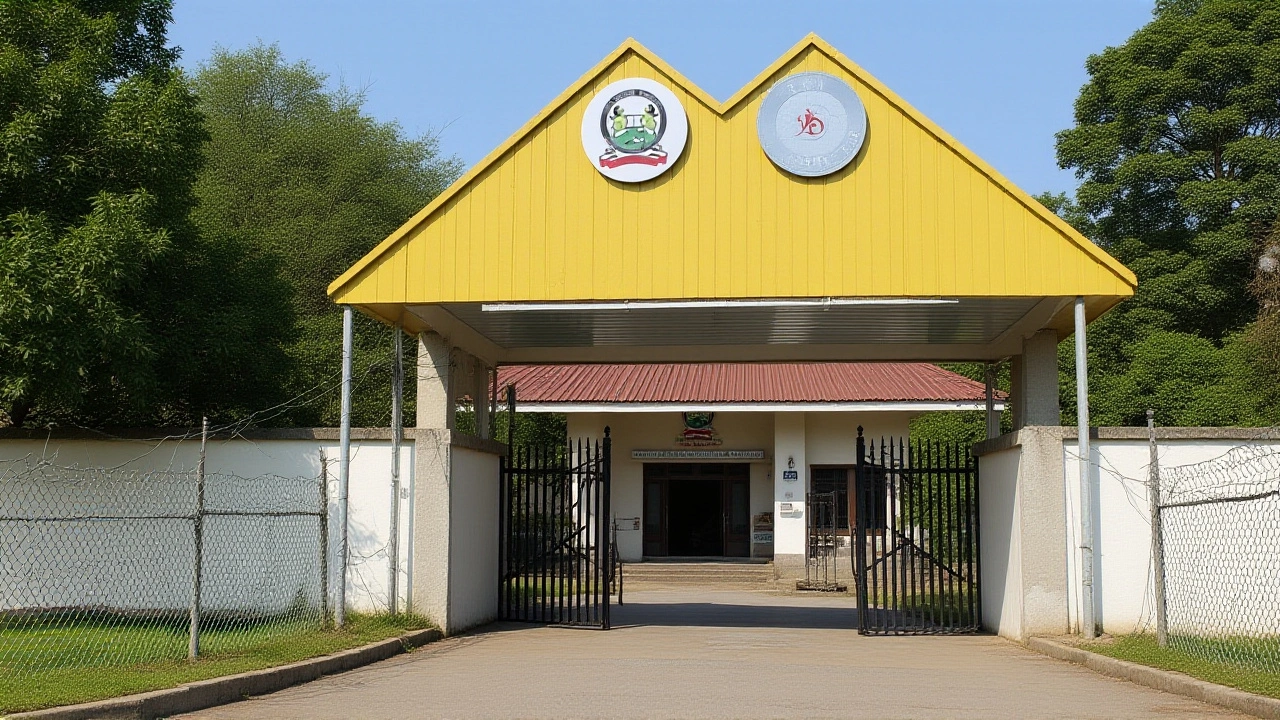KNEC Rolls Out Online System to Change Names on KCPE & KCSE Certificates
 Oct, 13 2025
Oct, 13 2025
When Kenya National Examination Council (KNEC) launched its new online query system, candidates suddenly had a way to fix misspelled names on their certificates without trekking to an office. The move, announced on 12 March 2025, shifts the whole amendment process to a web portal and promises a thirty‑day turnaround.
Here’s the twist: the portal – officially called the Query Management Information System (QMIS) – lives on KNEC’s main website, and anyone with a Kenyan phone number can register, upload documents, and pay the fee via MPESA. The change matters because, until now, a simple typo could mean a whole year of delayed university enrollment or a missed scholarship.
Why the Name‑Change Process Matters
Imagine graduating from primary school, only to discover your birth certificate says "James" while your exam certificate reads "Jame". In the past, you’d have to travel to Nairobi, stand in line, and hope the clerks remembered your roll number. Today, that same mistake can be corrected from a kitchen table in Kitui.
Beyond typos, the new system also covers legal name changes – think marriage, deed poll, or a formal change published in the Kenya Gazette. By centralising verification, KNEC reduces fraud, speeds up the issuance of corrected certificates, and gives schools a reliable source of data.
Step‑by‑Step Guide to Using the QMIS Portal
First, open the KNEC website and click on the “Certificate Replacement & Confirmation” tab. Then select “Apply for Replacement of Certificates.” If you already have a QMIS account, log in with your username and password. If not, click “Register” and fill in your full name, a valid Kenyan phone number (this is crucial for MPESA payment), and an email address.
Once you’re in, choose the type of query – either name change or “Lost/Damaged Certificate.” For a name amendment, pick the exam (KCPE or KCSE) and the year you sat for it. The system will pull up your existing details; if everything looks right, you can type the new name exactly as you want it to appear.
Next, the portal asks you to upload supporting files. The first upload slot is for the original result slip; the second is for your birth certificate; the third is for a letter from the principal of the school where you sat the exam. The interface walks you through each step, flagging any missing file before you can hit “Submit.”
After the uploads, you’ll be prompted to pay Ksh 5,000 via MPESA. The transaction ID appears on screen; copy it, paste it into the designated field, and the system confirms receipt. Finally, click “Submit Query.” You should receive an email acknowledgement within 24 hours, and the corrected certificate will be mailed to the address you provided within the thirty‑day window.
Supporting Documents You’ll Need
- A written letter from the principal or headteacher confirming your enrolment and the exam you took.
- A clear copy of your birth certificate.
- Your original result slip (or a copy from the school if the original is missing).
- If you changed your name through marriage, a copy of the marriage certificate.
- For deed‑poll changes, a copy of the Kenya Gazette notice that records the new name.
- A recent colour passport photograph.
When the school in question has closed, the District Education Officer – for example James Otieno, DEO of Siaya County – must issue a recommendation letter. The recommendation is then attached in the same upload step.

Replacing Lost or Damaged Certificates
If you can’t locate the original document, the process is similar but requires extra paperwork. You’ll need a police abstract confirming the loss, a sworn affidavit attesting to your identity, a copy of your national ID, and the same Ksh 5,000 fee. Once KNEC verifies everything, they issue a “Certification of Examination Results” letter that serves as a duplicate certificate.
All applications, whether for a name change or a replacement, end up in the hands of the Chief Executive Officer of KNEC – currently Dr. Samuel K. Muthomi. The final package is mailed to P.O. Box 73598‑00200, City Square, Nairobi.
Special Cases and Frequently Asked Questions
Private‑school candidates or those whose schools have shut down must first secure a recommendation from the Provincial Director of Education (PDE). The recommendation, once attached, smoothens the verification stage.
Result slips issued before 2013 for KCPE are generally not accepted for name‑change applications, but those issued from 2013 onward – available directly from the KNEC portal – are fine.
Frequently Asked Questions
How long does a name‑change request take?
KNEC aims to process each request within thirty days from the date of submission, provided all documents are complete and the MPESA payment is confirmed.
What if my birth certificate is unavailable?
In rare cases, a sworn affidavit together with a national ID can substitute for a birth certificate, but KNEC will still request a supporting letter from the school’s principal.
Can I track my application status?
Yes. After logging into the QMIS portal, the “My Queries” section shows real‑time updates – from “Received” to “Under Review” and finally “Completed”.
Is the MPESA fee refundable if my request is denied?
The fee covers administrative costs and is non‑refundable, even if the request fails due to incomplete documentation.
Who can I contact for help with the online form?
You can email the KNEC support team at [email protected] or call the hotline +254‑20‑712 1234. The staff typically respond within 48 hours.

Ayush Sanu
October 13, 2025 AT 22:01The QMIS portal streamlines name corrections, reducing administrative burden.
Prince Naeem
October 23, 2025 AT 13:32Identity, once recorded, becomes a tether to our lived experience. A typo on a certificate can feel like a crack in that tether, questioning the continuity of self. Yet the digital age offers a chance to mend that fracture with a few clicks. When we correct a name, we are not merely fixing paperwork; we are reaffirming personal narrative. The portal thus serves both bureaucratic and existential purposes.
Jay Fuentes
November 2, 2025 AT 04:04Hey folks, this new system is a game‑changer! No more trekking to Nairobi just to fix a single letter. You can sit at home with a cup of chai and get it sorted. Kudos to KNEC for finally making life easier for us.
Veda t
November 11, 2025 AT 19:35Kenya’s own system, finally! No foreign meddling in our certificates.
akash shaikh
November 21, 2025 AT 11:07lol, so you just upload a pic of your birth cert and pay five grand, huh? i guess that’s easier than standing in line for hours. but make sure you double‑check the name before hitting submit, otherwise you’ll be stuck again. also, don’t forget the principal’s letter – they love that paperwork. the whole thing feels like a Netflix binge, but with more forms. good luck, fam.
Thirupathi Reddy Ch
December 1, 2025 AT 02:38Ever notice how MPESA payments are tracked? Some say the data could be used to monitor citizens. If KNEC is pulling payment IDs, they could theoretically link each name‑change request to a phone number. That’s a privacy nightmare waiting to happen. Keep an eye on how that information is stored.
Sonia Arora
December 10, 2025 AT 18:10This initiative beautifully blends tradition with technology. It respects the cultural importance of names while embracing modern convenience. Parents will breathe a sigh of relief knowing their children won’t face bureaucratic hurdles. The educational community can now focus on learning rather than paperwork. Truly a step forward for Kenya’s academic landscape.